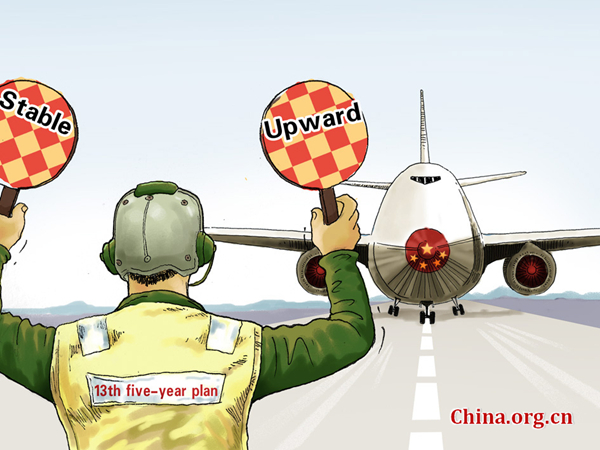Confidence in Chinese economy not to be shattered by bearish voices
- By Ji Peijuan
 0 Comment(s)
0 Comment(s) Print
Print E-mail People's Daily, March 1, 2016
E-mail People's Daily, March 1, 2016
As the annual “two sessions” begin in early March, China will, at the starting year of its 13th Five-Year Plan period, embark on a new round of promising development, refuting those bearish voices on Chinese economy.
|
[By Zhai Haijun/China.org.cn] |
Dubbed the two sessions, the Chinese People's Political Consultative Conference (CPPCC), the country’s national advisory body, will open on March 3, and the meeting of the National People's Congress (NPC), the top legislative body, will begin on March 5.
After some claimed they would “short sell” China at the Davos World Economic Forum at the beginning of this year, some hedge funds have bet on an extreme drop in China's currency.
However, those bearish views failed to hold water since the Chinese economy neither encountered a “hard landing” or “a cliff-like drop.”
A report released by China’s National Bureau of Statistics (NBS) revealed that China's average annual economic growth hit 9.8 percent from 1979 to 2012. Thanks to increasing economic aggregate, the GDP increment in 2015 reached 4.1 trillion yuan ($626.9 billion), surpassing the total 3.6-trillion-yuan GDP volume in 1993.
Even after China’s economy entered into the “new normal” phase, during which it will focus more on the quality of economic growth rather than quantity, it maintained a medium-high growth rate. This fact suffices for market confidence.
Chinese President Xi Jinping, when attending the 10th G20 Summit last November, also noted that China has the confidence and ability to sustain a medium-high growth rate and continue to create development opportunities for other countries.
China's confidence comes from its determination and actions to comprehensively deepen reform and build an open economic system, as well as the strong endogenous dynamic of China's economy and the policy guidance of the Chinese government, as Xi said.






